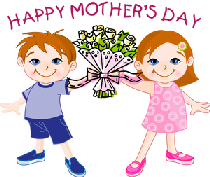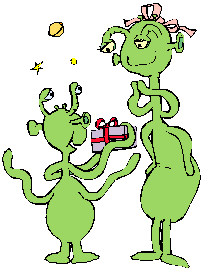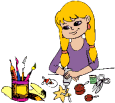All About Mother's Day for Kids
Mother's Day Facts and Resources
We have moved to a new url. Reorganizing. You will be redirected to the new
page in a few seconds.
http://kiddyhouse.com/celebrations/cs/mothers-day/
OR CLICK HERE to go there straight away.
| Mother's Day | HOMEPAGE | Teacher's Corner |
| Kid's Corner | Holidays & Celebrations | Other Themes |

|
History of Mother's Day
 The honoring of our Mothers with a celebration, is a tradition which can be traced back to the Spring festivals in
ancient Greece, which paid tribute to the Mother of their Gods, Rhea.
The honoring of our Mothers with a celebration, is a tradition which can be traced back to the Spring festivals in
ancient Greece, which paid tribute to the Mother of their Gods, Rhea.
As a Christian festival, Mothering Sunday (still celebrated today in the UK and many British Commonwealth countries), can be traced back in England to the 17th Century when a festival to honor Mary, Mother of Jesus was created. It is celebrated on the fourth Sunday in Lent (the 40 day period leading up to Easter) and today additionally honors all the Mothers in the UK, and wherever else it is celebrated.
It must be said, however, that it has been rather over-commericalised, with many complaints at the large price increases on flowers, potted plants and so on, traditionally given as gifts to Mothers on this day.
Julia Ward Howe and Mother's Day in the USA
In the US, Mother's Day was loosely inspired by the UK's Mothering Sunday. But it was the efforts of Julia Ward Howe and Anna Jarvis that eventually saw President Woodrow Wilson proclaim "Mother's Day" in 1914, as a national observance to be held each year on the Second Sunday of May.
In 1870, Julia Ward Howe (who wrote the words of "The Battle Hymn of the Republic") was very distraught by the death and sufferings of the Civil War. She called on all mothers to come together to protest the carnage and the killings. Howe called for an international Mother's Day to celebrate peace and motherhood. She tried to issue a manifesto for peace at international peace conferences in London and Paris and during the Franco-Prussian War in the 1870s Julia began a one-woman peace crusade and made an impassioned appeal to womanhood to rise up against war.
She went on to generate a powerful plea that same year in Boston, MA, which was considered by many to be the original Mother's Day proclamation. Simultaneously she began to promote an International Women's Peace Congress, together with the idea for a Mother's Day of Peace to be held on June 2nd in each year. It seems that in Boston at least she was successful, for observance of Mothers' Peace Day was established as an annual event and held for at least the next 10 years.
The celebrations seemed to die out when she turned her attention to working for women and peace in other ways. Julia's achievements were further recognised in 1988, when the US Post Office issued a stamp bearing her picture.
Ann Marie Reeves-Jarvis and her daughter, Anna Jarvis
Julia's ideas were influenced by a young Appalachian homemaker, Ann Marie Reeves-Jarvis, who, as early as 1858 had tried to improve sanitation through what she called Mothers' Friendship Day. In the years after the end of the Civil War, Ann was instrumental in saving the lives of thousands by teaching women in her Mothers Friendship Clubs the basics of nursing and sanitation.
Who created Mother's Day?
But it was essentially Ann's daughter, Anna Jarvis, who eventually succeeded in the introduction of the Mothers' Day celebrations that we know today. Her mother died in 1905 and two years later Anna Jarvis persuaded her mother's church, Andrews Methodist Church in Grafton, West Virginia, to celebrate Mother's Day on the anniversary of her mother's death. She and others began writing letters to businessmen, ministers and politicians to get Mother's Day established. Anna handed out white carnations, her mother's favorite flower at one of the first services organized to celebrate her mother's life.
Symbol of Mother's Day
 The while carnation became the symbol of Mother's Day. It is now worn as an emblem of
purity, strength and endurance for motherhood.
The while carnation became the symbol of Mother's Day. It is now worn as an emblem of
purity, strength and endurance for motherhood.
When is Mother's Day?
The Mothers' Day International Association came into being on December 12th 1912, to promote and encourage meaningful observances of the event. Anna's dream came true when on May 9th 1914, the Presidential proclamation by President Woodrow Wilson, declared the second Sunday of May to be observed as Mother's Day to honor the mothers.
Commercialization of Mother's Day
Initially, people celebrated Mother's Day by attending church and writing letters to their mothers. Later on, they began sending cards, flowers and presents. Anna Jarvis was very unhappy about the commercialization of Mother's Day to make profits. She felt that Mother's Day was being exploited. So, in 1923, she sued to stop a Mother's Day event. She was also arrested for disturbing the peace at the American War Mothers group where she protested against the sale of white carnations. Anna Jarvis, in 1930 also petitioned against the postage stamp featuring her Mother, white carnations and the word "Mother's Day." She was successful in having the words "Mother's Day" removed. However, this did not stop Mother's Day from flourishing in the United States and in other parts of the world.
While many countries of the world celebrate their own Mother's Day on different days and at different times throughout the year, there are some countries such as Denmark, Finland, Italy, Turkey, Australia, and Belgium which also celebrate Mother's Day on the second Sunday of May.
Today, Mother's Day is a day honoring mothers, when you acknowledge your mother's contribution in your life and pay a tribute to her, often with flowers and gifts. But of course, we should not need a special day once a year to do this. We can and should thank our loving, caring mothers every day, and do things for her every day, not just on Mother's Day or Mothering Sunday.
THINGS TO DO FOR MOTHER'S DAY
Here are some suggestions on things you can do for Mother's Day :-
THINGS NOT TO DO ON MOTHER'S DAY :-

|
MOTHER'S DAY WORKSHEETS & COLORING ACTIVITIES
Check out some of our original printables |

|
MOTHER'S DAY STORIES |

|
MOTHER'S DAY SONGS & POEMS |

|
MOTHER'S DAY CRAFTS FOR KIDS
Suitable for ages 2-12. Make some Mother's Day crafts for moms or print out a free card to give to mom. |

|
MOTHER'S DAY LESSON PLANS
Lesson plans and activities |
DISCLAIMER : This is a disclaimer. We try to gather information that are
as accurate as possible. However, if there are mistakes, we will not be held
liable for anything. Use it at your own discretion.
IMPORTANT : We are not responsible for any links beyond our site.


